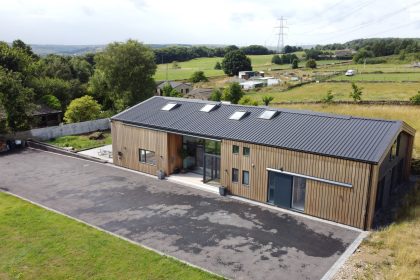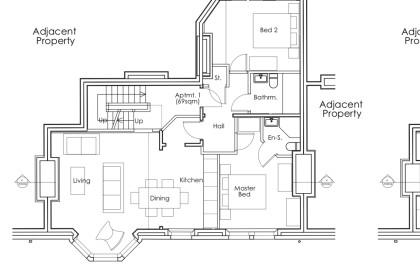 So, you’re too busy to tackle your renovation/build project yourself? You possibly don’t feel confident enough or have the experience to be able to handle such a challenging build yourself.
So, you’re too busy to tackle your renovation/build project yourself? You possibly don’t feel confident enough or have the experience to be able to handle such a challenging build yourself.
Having someone manage your project is a huge weight off your mind and in most cases is the right decision as they can deal with any issues that arise, handle timings of build stages and communicate everything efficiently to ensure everything goes as smoothly as possible.
So where do you start? There are building contractors, project managers and architects – who does what and which one might be most suitable? Find out below
Main Contractor
A main contractor is a firm that manages your whole project. They handle all the material purchases, labour, equipment, processes, communication and ultimately the completion of your project. They are also responsible for managing construction waste, providing temporary utilities, monitoring cash flow and maintaining records.
A main contractor will often bring in other professionals to assist in specialist areas such as groundwork through to kitchen fitting. These sub-contractors work for the main contractor and report to them directly, and the main contractor is responsible for organising and co-ordinating their input.
As the homeowner of your project, once you hire a main contractor, you can mainly sit back and relax whilst the work is being done – as well as keeping up with the payments for the ongoing costs of the project.
The architect will usually put a traditional Building Contract in place between you and the building contractor, and will then administer this to ensure that both parties are carrying out their duties under the terms of the contract to satisfactory completion.
This will include regularly monitoring of construction work as it progresses to ensure that it is accordance with all the contract drawings and specifications, and certifying interim payments due to the main contractor by the client at agreed stages, but only when the architect considers that the relevant construction work stages are satisfactorily complete.
A retention of 5% of the total contract sum is also usually held back to ensure that the main contractor rectifies any defective work before this final payment is released, and the architect will issue a certificate only when they are satisfied that this is the case before the client makes this payment.
Costs wise – contractors usually charge overheads of around 15-20% of the total cost of the build project within the agreed contract sum.
The main benefit to the client of using a main contractor is the peace of mind that that there is only one single point of responsibility for all the construction work involved in the project, and that is the main contractor. If there are any issues that arise, they are usually responsible for resolving these.
Project Manager
A project manager will work directly for you during the project, and will commission various sub-contractors to carry out all the construction work required for the project and each one will be working directly for you. The project manager will pitch ideas for various suppliers, give suggestions and offer advice but ultimately the final decisions lie with you.
The role of a project manager includes scheduling subcontractors and ordering materials. Although they manage the project, they are independent and don’t usually have their own employees or sub-contractors working on the job like main contractors do, and so their liability and responsibility for suppliers and sub-contractors is much less.
If issues arise on a project, this can be problematic if suppliers and sub-contractors blame each other where there is overlap between their work and this can occasionally be difficult to unpick and deal with, but an experienced project manager can usually help you to resolve any issues like this.
The project manager will ensure that the work meets the specific standards established by the homeowner in terms of quality of work and design. The project manager’s loyalty is to the homeowner, so rest assured they are keeping your best interests and budget in mind.
The CDM Regulations which govern health and safety for construction projects needs carefully considering when you employ a Project Manager for your project, as the role of Principle Contractor can be more difficult to ascertain than if you employ a main contractor where the role is usually clear.
Costs wise – project managers often charge a percentage of around 10-15 % of the total cost of the build project, or may agree flat fee or hourly rate. This is usually less than a main contractor which reflects the fact that their liability on the project is usually less.
The main benefit to the client of using a project manager is the flexibility and open-book nature of the method, but there is no single point responsibility for all the construction work as each sub-contractor or supplier is responsible for their own work and accountable to you separately.
The role of the architect in this instance is usually limited to that of lead designer providing design advice, coordinating the input of other consultants, discharging planning conditions and supporting the project manager and client in design detailing, construction queries and sub-contractor/supplier decisions. No interim payment certificates are issued by the architect after inspections in this case, the project manager manages payments schedules and cashflow.
Which is better for you?
Choosing between a main contractor and a project manager entirely depends on your own personal circumstances and preferences, but liability and responsibility factors should be fully considered before making a decision.
If you are wanting to be more hands-on with the project but still have someone holding your hand as such, then a project manager could be the way forward. If you want to leave everything including full liability and responsibility to the professionals, then a main contractor might be the best option.
Ultimately it is worth exploring both options and seeing which you feel more confident with before making that decision.
For any advice on how to procure your building project, please do get in touch with a member of our team – we’d be delighted to help.







